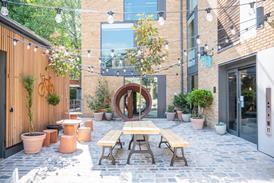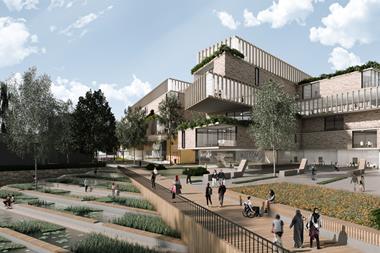Honor Barratt, chief executive of assisted living developer Birchgrove, and Caryn Donahue, head of the senior living and healthcare team at Savills, speak to Montfort’s Andrew Teacher about the state of the later living sector.
LISTEN to this podcast via Apple, Amazon, Spotify or SoundCloud (and many other platforms) or just use the player below:
Honor Barratt currently heads up Birchgrove, a developer and operator of later living homes, but she has had an unusual and creative route into property development compared to most.
Having worked in news and sport on television, she then founded an agency that then sold to Octopus. It was here she encountered senior living property as part of the firm’s portfolio, which prompted a “total career change”.
After visiting a development, “I drove back up the M4, did an MBO within two weeks, and moved straight over to senior living,” as she explains.
Barratt is now convinced that the rental model is the most appropriate for most older people.
“If you’re 85, spending £800,000 on a retirement apartment with a 30 percent exit fee is not necessarily right for you,” she explains.
Caryn Donahue leads Savills’ senior living and healthcare team. “The structural demand drivers aren’t the issue in terms of the growth of the sector,” she observes, explaining the long-term undersupply of homes that England, like a lot of Western countries, is experiencing.
“The majority of investment in the space has been long-term capital,” she continues. “When you think about the long-term nature of the business, it takes 12 to 15 years to really be in a position where you’re stabilising those income streams. And so it’s meant that there are less capital providers that can actually access the sector as a result.”
It’s a different situation in Australia, where the market is much more developed, and the US, where “people view senior housing as one of the major asset classes like you would do residential or retail.”
Donahue is reluctant, however, to chalk this up to cultural differences. “I don’t think it’s cultural that people won’t move into a retirement community. There just aren’t enough of them for them to really understand what the product is.”
Ultimately, Barratt doesn’t see a huge difference between later living and other residential sectors. “The BTR guys and the student guys are sitting there on the outline thinking that what we do is difficult,” she remarks. “And it’s not, it’s exactly the same. We’re still signing for Amazon parcels. It’s a slightly higher staff to resident ratio, absolutely. But it’s not rocket science.”
And while Birchgrove offers care regulated by the Care Quality Commission, only 22 percent of the firm’s residents require this level of treatment.
“The 40 minutes that I’ll then spend with you while you tell me stories of your wife, for us, that’s care with a small ‘c’,” Barratt notes.
Looking to the future, Donahue agrees with Barratt that the rental model is going to grow. “It is a way for investors to access the space, but also from a resident’s perspective, at a certain age, there is such a value in renting over buying,” she says.
But, as the sector remains relatively young, there are opportunities abound. “Later living is at a very different point in its evolution in the UK, so it’s untapped, whereas every deal in the US is super competitive because there’s so much capital chasing that space,” Donahue explains.
LISTEN to this podcast via Apple, Amazon, Spotify or SoundCloud (and many other platforms) or just use the player above.































No comments yet